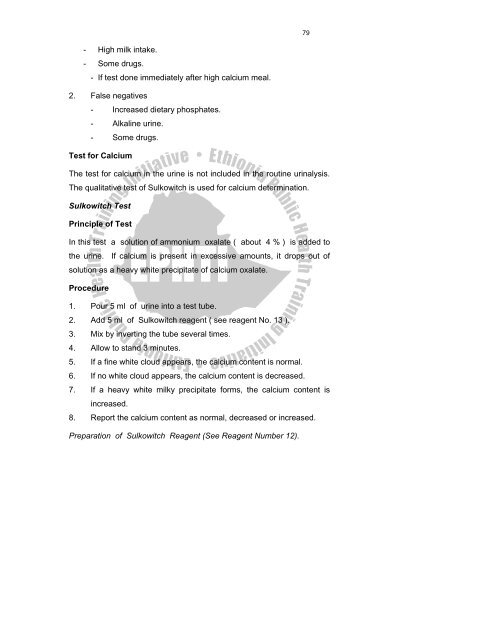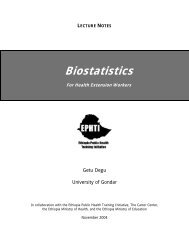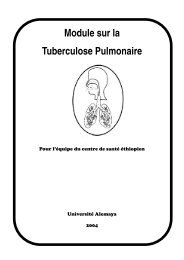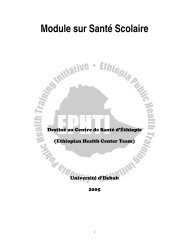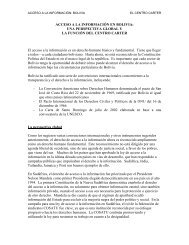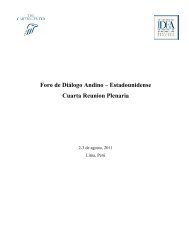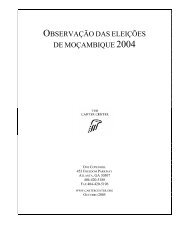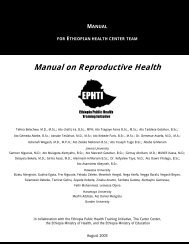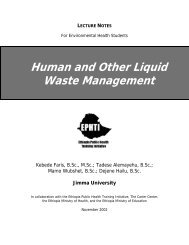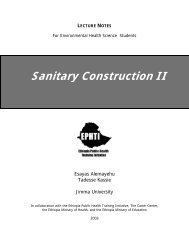Urinalysis - The Carter Center
Urinalysis - The Carter Center
Urinalysis - The Carter Center
You also want an ePaper? Increase the reach of your titles
YUMPU automatically turns print PDFs into web optimized ePapers that Google loves.
79<br />
- High milk intake.<br />
- Some drugs.<br />
- If test done immediately after high calcium meal.<br />
2. False negatives<br />
- Increased dietary phosphates.<br />
- Alkaline urine.<br />
- Some drugs.<br />
Test for Calcium<br />
<strong>The</strong> test for calcium in the urine is not included in the routine urinalysis.<br />
<strong>The</strong> qualitative test of Sulkowitch is used for calcium determination.<br />
Sulkowitch Test<br />
Principle of Test<br />
In this test a solution of ammonium oxalate ( about 4 % ) is added to<br />
the urine. If calcium is present in excessive amounts, it drops out of<br />
solution as a heavy white precipitate of calcium oxalate.<br />
Procedure<br />
1. Pour 5 ml of urine into a test tube.<br />
2. Add 5 ml of Sulkowitch reagent ( see reagent No. 13 ).<br />
3. Mix by inverting the tube several times.<br />
4. Allow to stand 3 minutes.<br />
5. If a fine white cloud appears, the calcium content is normal.<br />
6. If no white cloud appears, the calcium content is decreased.<br />
7. If a heavy white milky precipitate forms, the calcium content is<br />
increased.<br />
8. Report the calcium content as normal, decreased or increased.<br />
Preparation of Sulkowitch Reagent (See Reagent Number 12).


